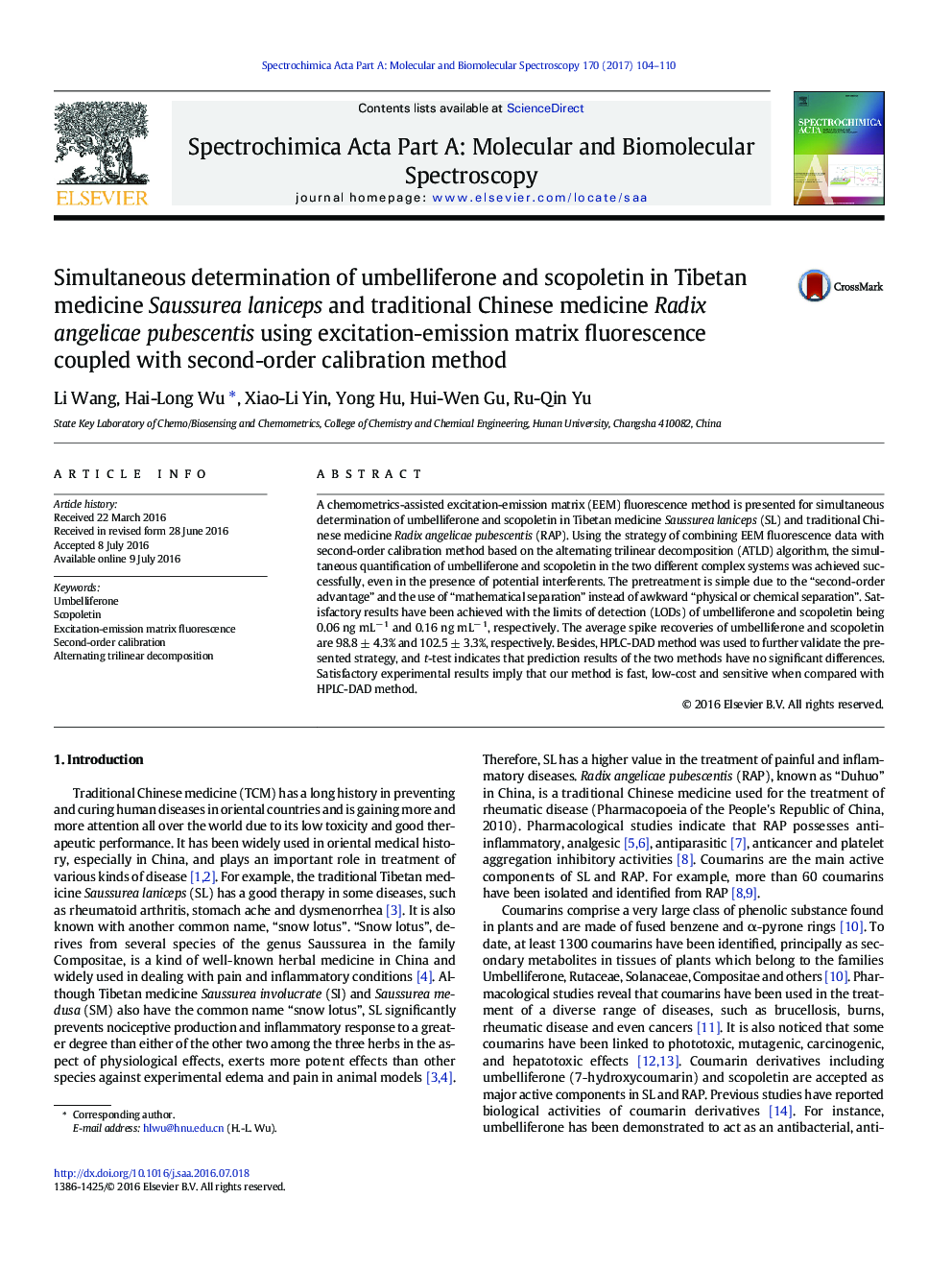| Article ID | Journal | Published Year | Pages | File Type |
|---|---|---|---|---|
| 1230784 | Spectrochimica Acta Part A: Molecular and Biomolecular Spectroscopy | 2017 | 7 Pages |
•A novel second-order calibration assisted EEM fluorescence method was presented.•The method was applied to simultaneously determine main components in traditional Chinese medicine.•Satisfactory results could be obtained in the presence of potential interferents.•The method proved to be fast, accurate, low-cost and high sensitivity.
A chemometrics-assisted excitation-emission matrix (EEM) fluorescence method is presented for simultaneous determination of umbelliferone and scopoletin in Tibetan medicine Saussurea laniceps (SL) and traditional Chinese medicine Radix angelicae pubescentis (RAP). Using the strategy of combining EEM fluorescence data with second-order calibration method based on the alternating trilinear decomposition (ATLD) algorithm, the simultaneous quantification of umbelliferone and scopoletin in the two different complex systems was achieved successfully, even in the presence of potential interferents. The pretreatment is simple due to the “second-order advantage” and the use of “mathematical separation” instead of awkward “physical or chemical separation”. Satisfactory results have been achieved with the limits of detection (LODs) of umbelliferone and scopoletin being 0.06 ng mL− 1 and 0.16 ng mL− 1, respectively. The average spike recoveries of umbelliferone and scopoletin are 98.8 ± 4.3% and 102.5 ± 3.3%, respectively. Besides, HPLC-DAD method was used to further validate the presented strategy, and t-test indicates that prediction results of the two methods have no significant differences. Satisfactory experimental results imply that our method is fast, low-cost and sensitive when compared with HPLC-DAD method.
Graphical abstractFigure optionsDownload full-size imageDownload as PowerPoint slide
